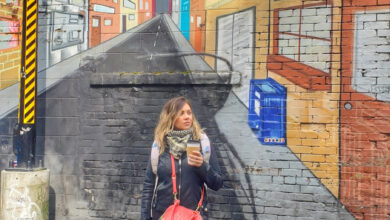ASIACitiesCouplesDestinationsFemale TravelJapanPeoplesTravel GuideTravel with your PetType of TravelYour next trip
What to do: One Day in Miyajima
Travel Guide Miyajima, JAPAN
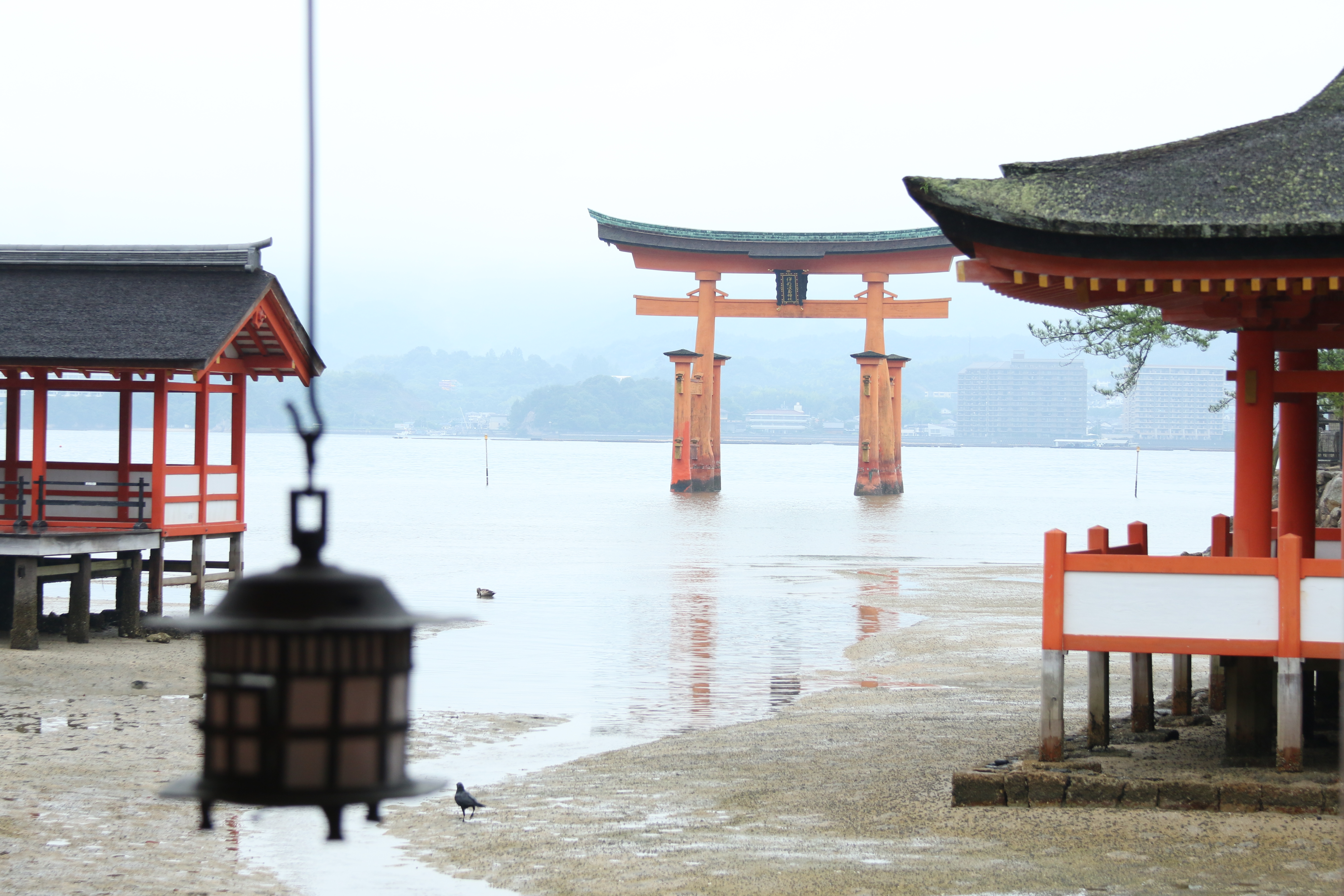
Table of Contents
Have you ever been or heard of Miyajima? This place is in Japan and was one of my favorite places in the country. Let me tell you more about it.
Check out the video of my trip here.
A little history
Miyajima means “the Island sanctuary” and that’s because this small island, since ancient times, is a sacred and cult place where it is said that the gods thought to live in harmony with the mortals.
Also this place is called Itsukushima, it is a place with lots of vegetation that gives off peace, beauty and tranquility.
It is a place of little population and home to deer and wild monkeys. In fact they are so accustomed to people who are allowed to caress.
The Itsukushima sanctuary and its gate Torii have been declared a World Heritage Site by UNESCO and are considered one of the three representative views of Japan since 1643.
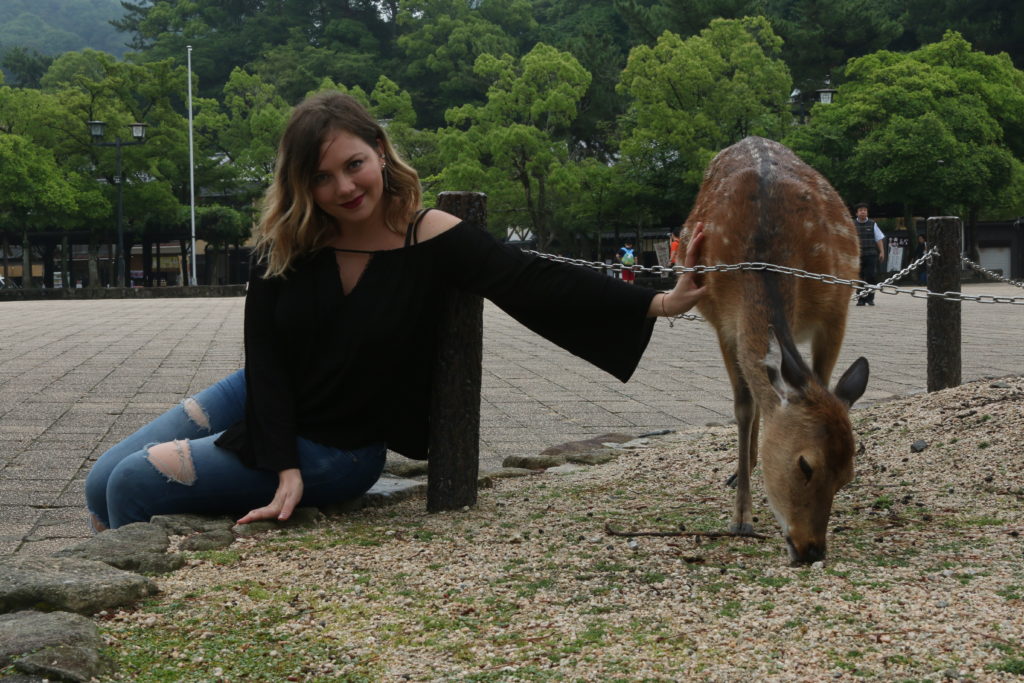
Most of Miyajima’s points of interest are concentrated in the small village surrounding the Itsukushima shrine at the foot of Mount Misen.
Weather
The weather for us improved a lot, although at times it was raining a bit. We travel in June, but it’s the time you go, it’s never too much to wear a raincoat.
Don’t forget to check to use with temperatures and weather in Hiroshima and Miyajima for season.
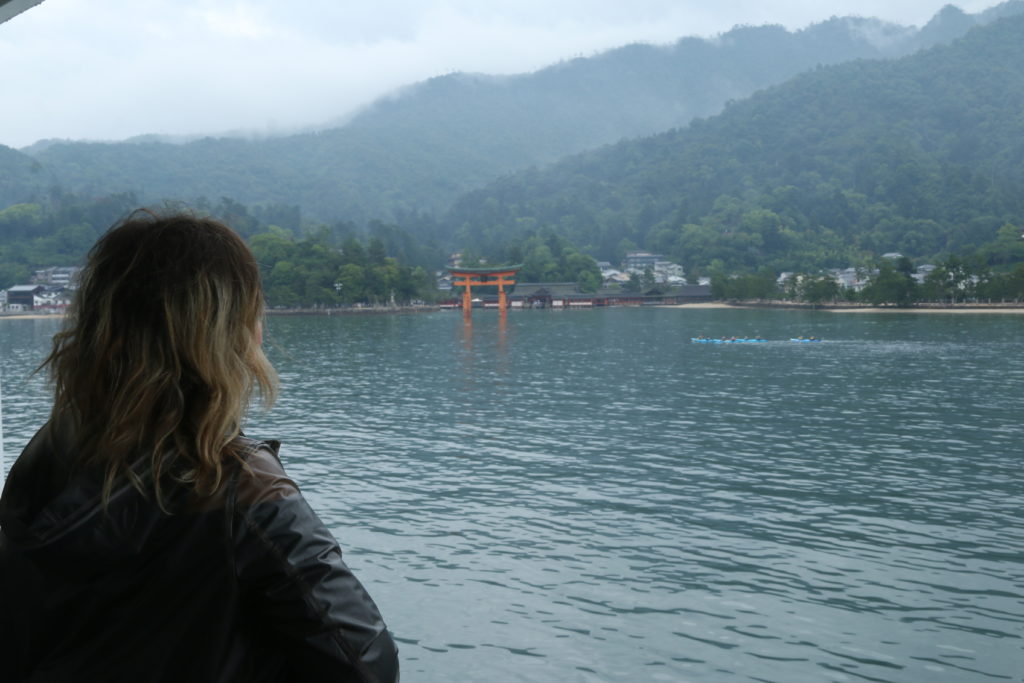
What to visit
Sanctuary of Itsukushima
This temple is a divine example of traditional architecture in a natural and wonderful environment such as the island of Miyajima.
-
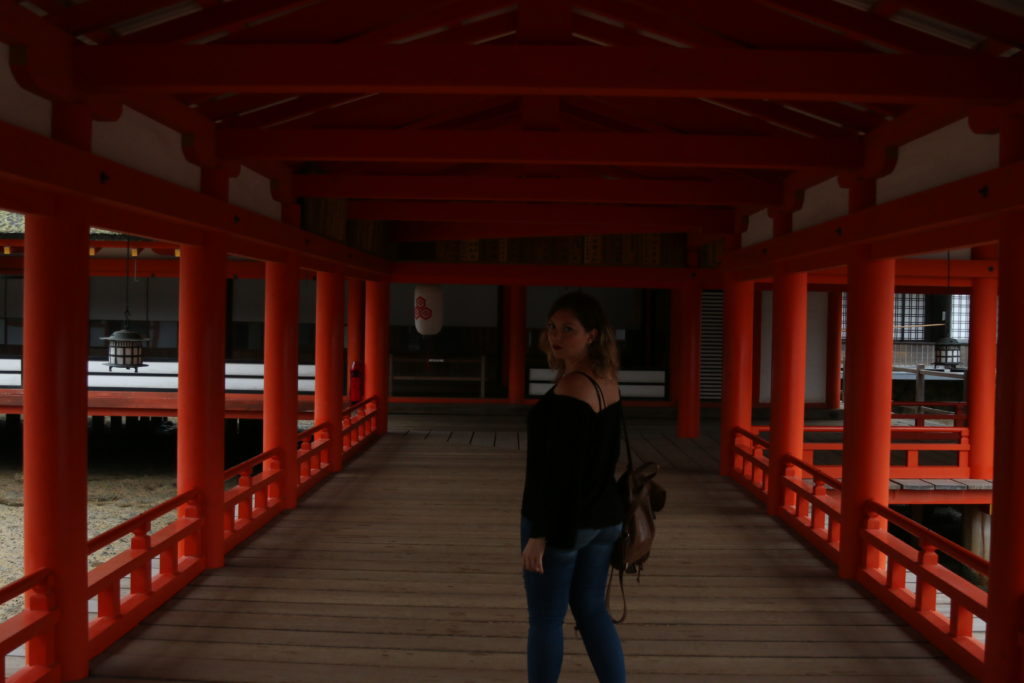
Miyajima -
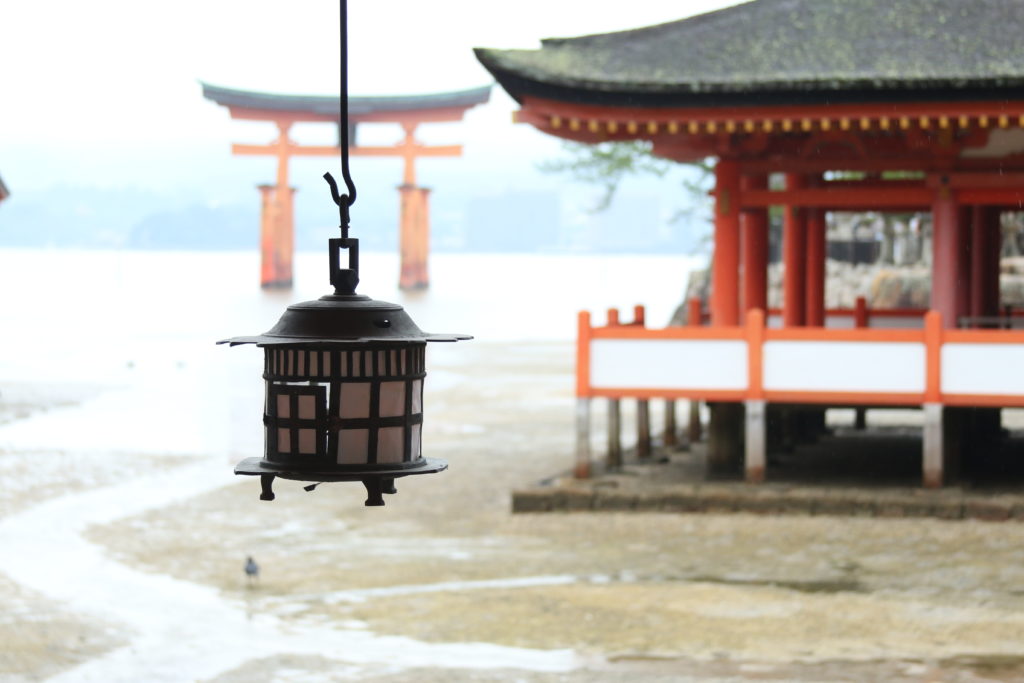
-
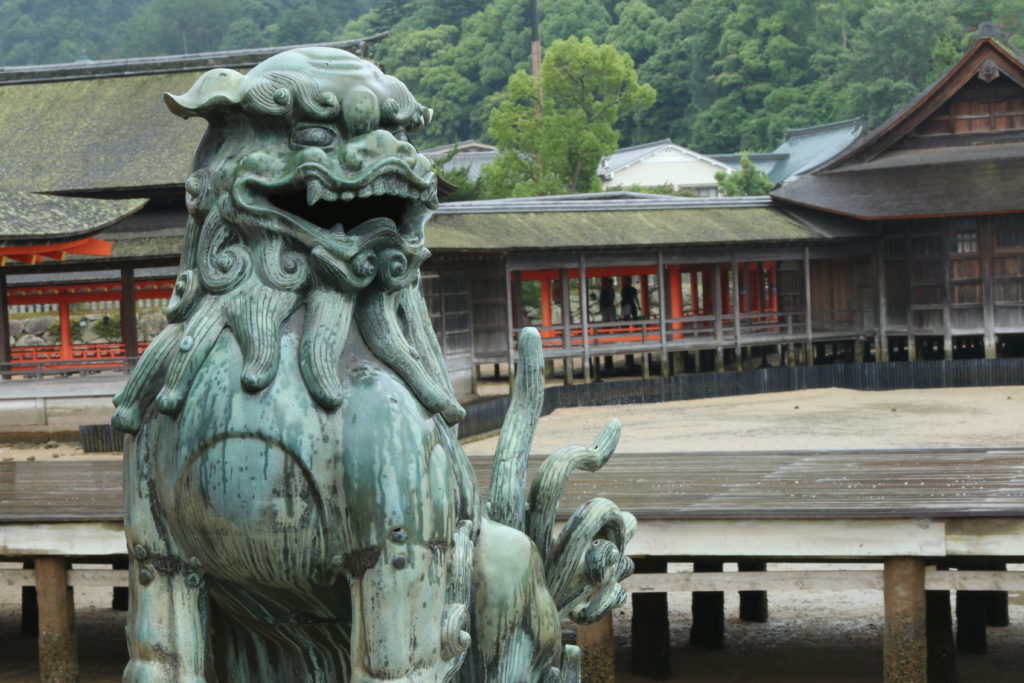
-
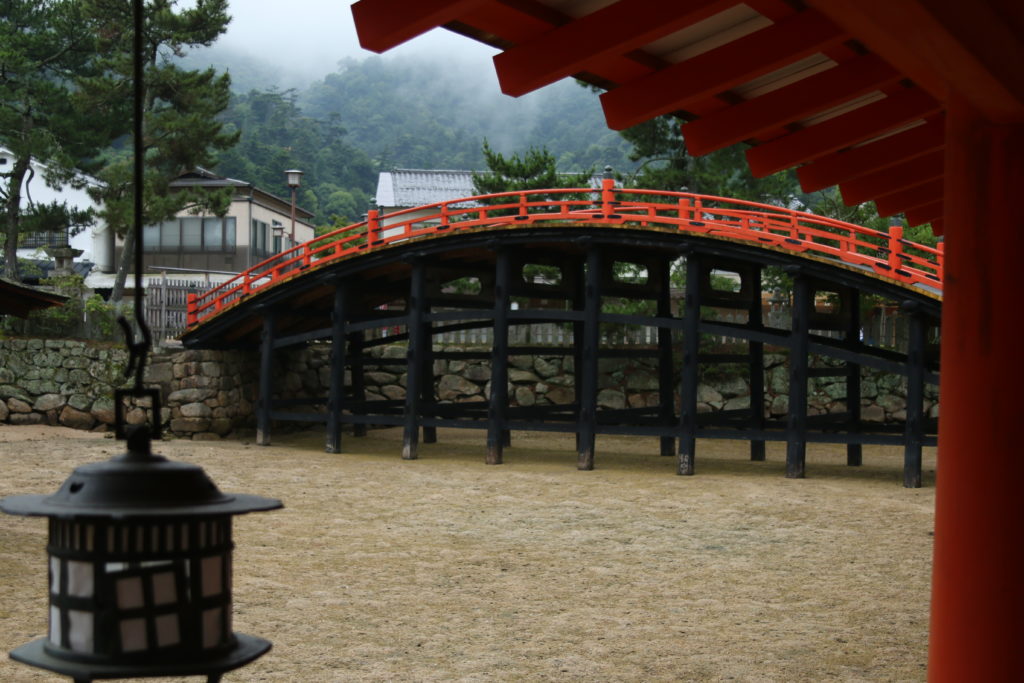
-
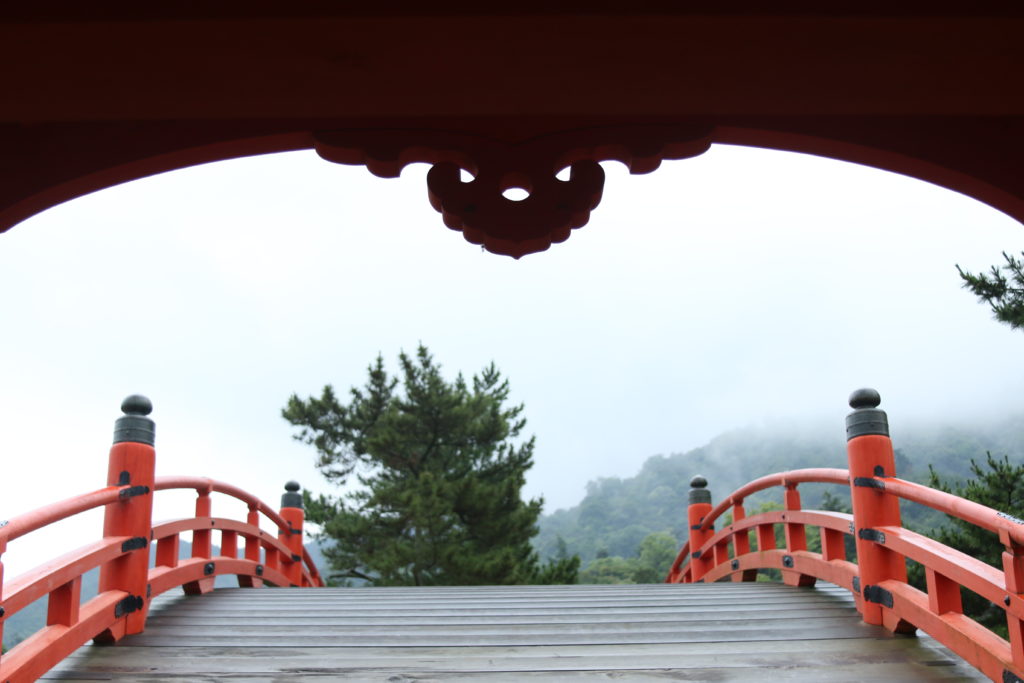
Bridge -
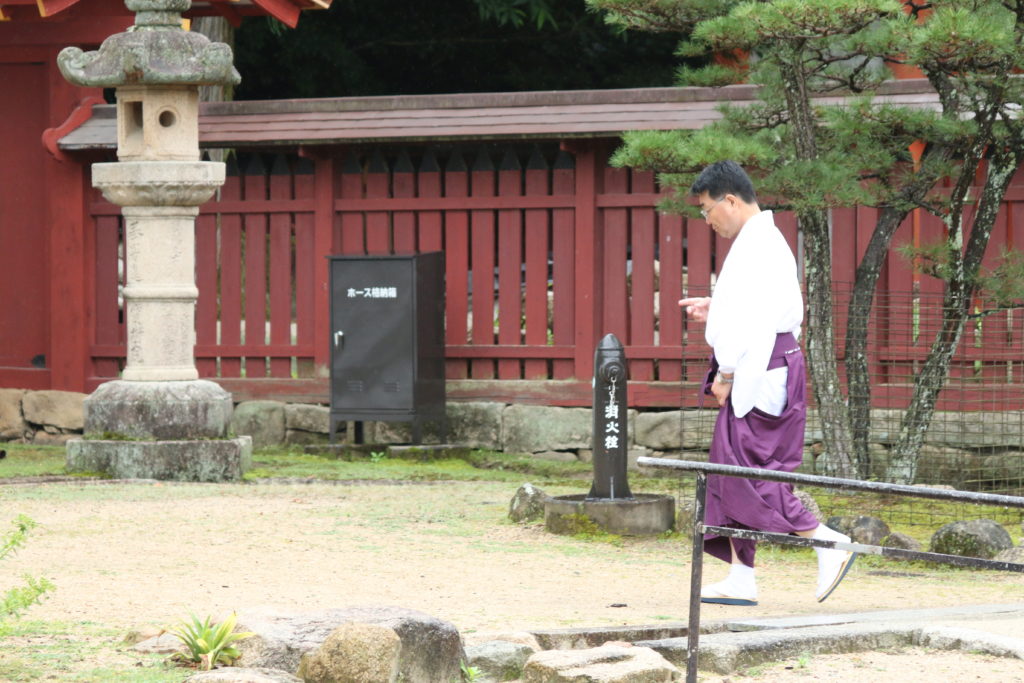
This ancient Shinto shrine, built around the year 1168. It is the center of all the activity of the island. It is a unique sanctuary because it is built on water.
The floating red Torii
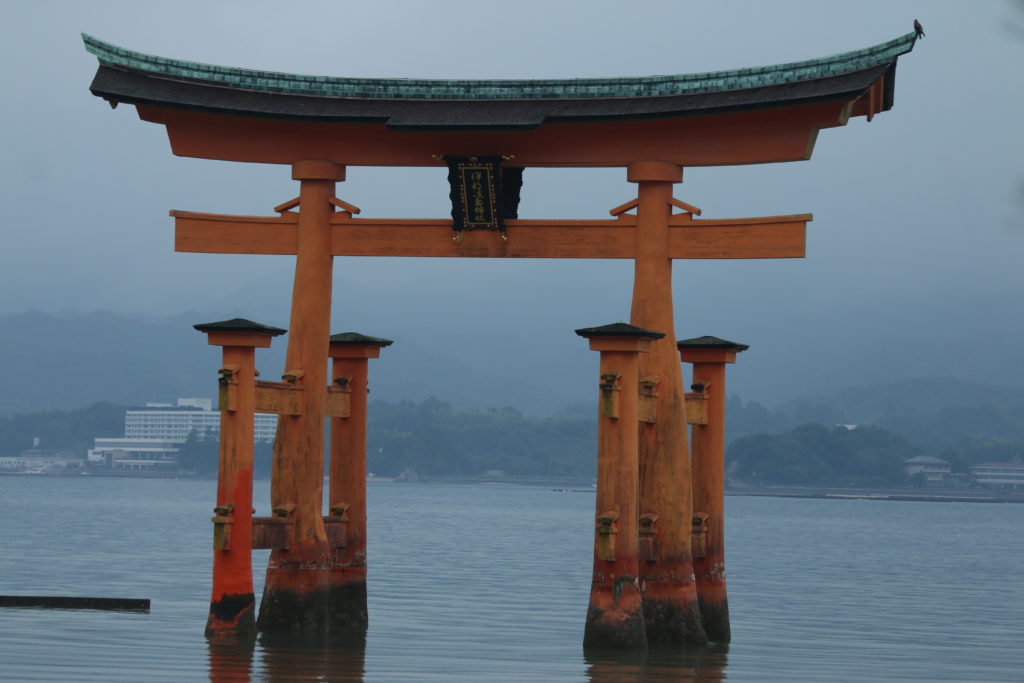
The word torii means “bird’s abode”. These doors were built as entrances to the spirituality of the Shintoism, to mark the separation between the mundane and the sacred.
The Red floating gate is the entrance to the Itsukushima shrine, the family sanctuary of Taira no Kiyomori.
When the tide is high, both the door and the sanctuary seem to float in the water. When the tide falls, visitors can walk to the door on the seabed itself.
Daisho-in Temple
This is a historic place and one of the most sacred to Shingon Buddhism.
It is a unique temple that occupies a large expanse of land.
It includes various gardens, buildings, halls, sacred statues, a curious tearoom, a cave that gives shelter to religious icons and a mandala of sand made by Tibetan monks during their visit.
The Daisho – in temple is about a fifteen minute walk from the ferry pier.
Mount Misen
This mountain is only accessible on foot or by cable car. There are three roads that depart from the village and converge at its summit, which rises to 500 meters above sea level.
They are: The Momijidani Road, the Omoto Road and the Daisho – in road. The first part of the Momijidani Park. It is the shortest but also the one with the most steps.

How to get there
We were coming to visit Hiroshima as you can get to know these two cities on a day without a problem.
From downtown Hiroshima, take the tram to the port of Miyajimaguchi, from where the ferry departs. From here, you can use your Japan Rail Pass to travel on the boat that takes just 10 minutes to get to the island.
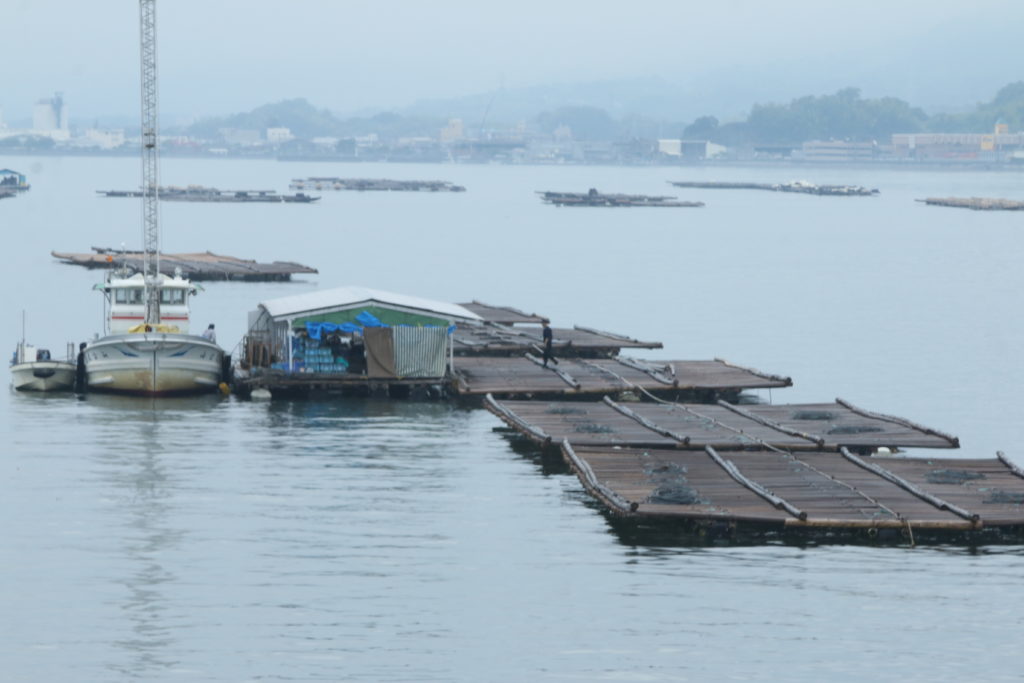
Another option is to take the JR Sanyo line to Miyamaguchi station. The ferry’s shipping pier is a 5-minute walk from the station.
-
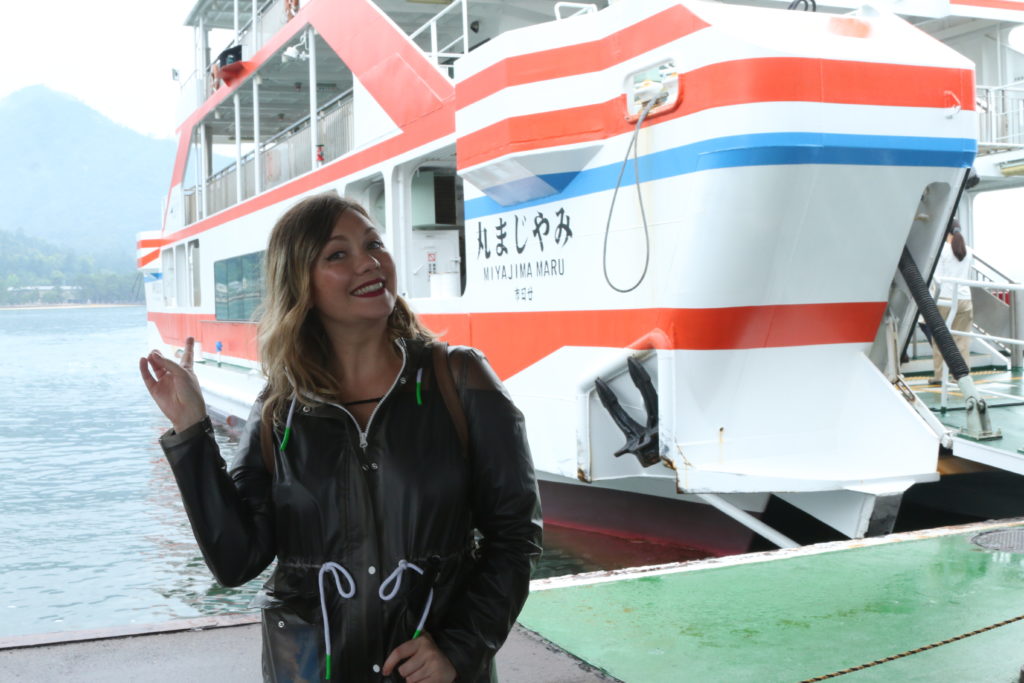
-
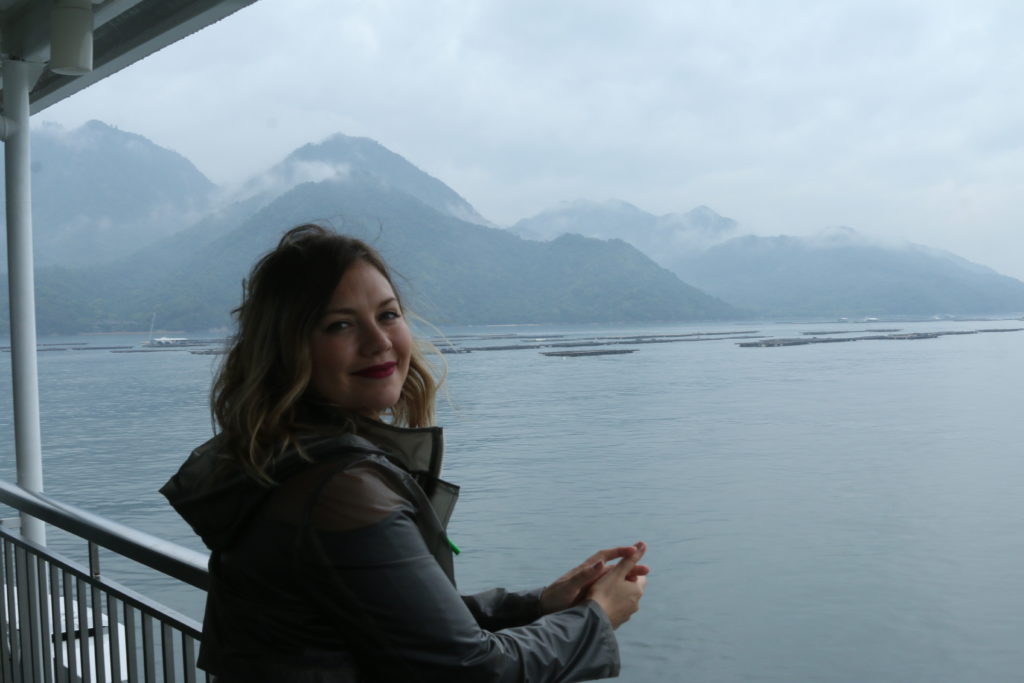
-
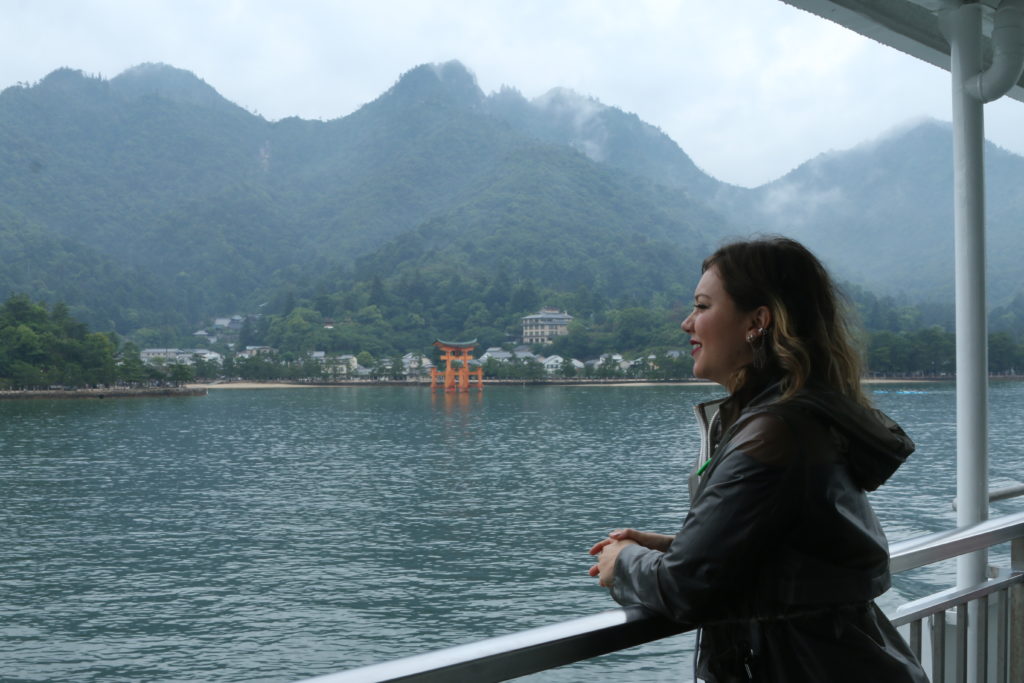
Ferry -
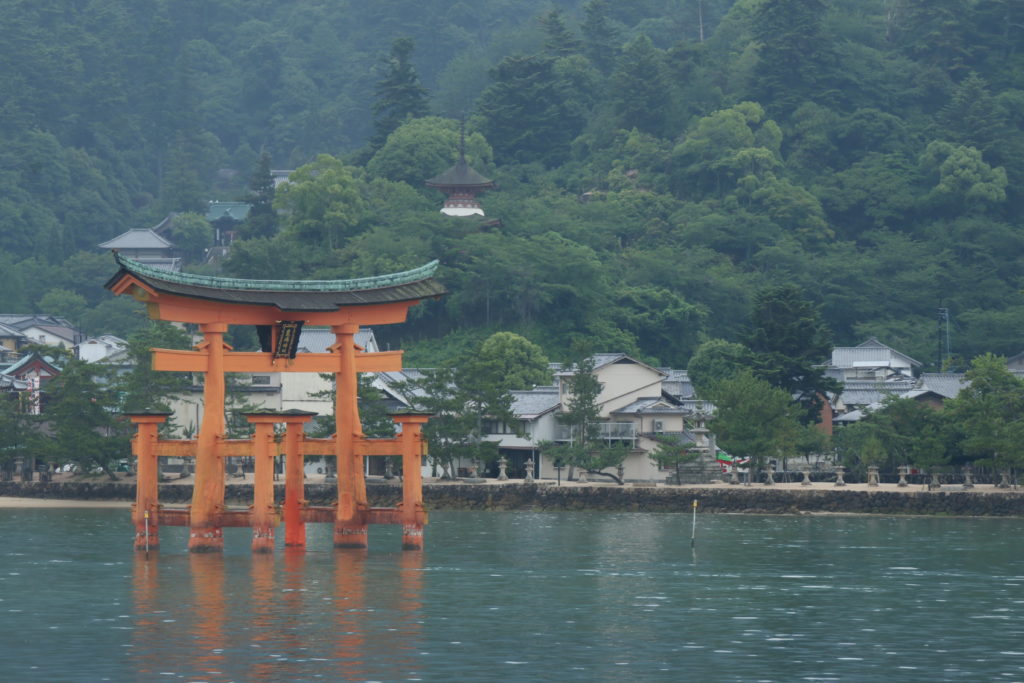
-

You also have direct boats that go from downtown Hiroshima, next to the Peace Park. Keep in mind that the Japan Rail Pass does not cover the trip on these boats and that in them, the journey to the island lasts about an hour.




